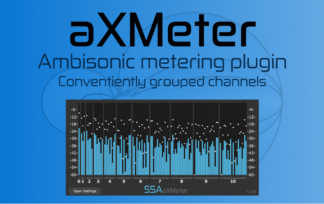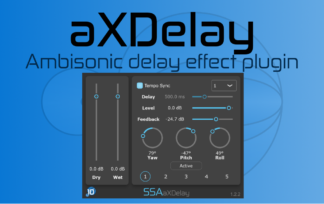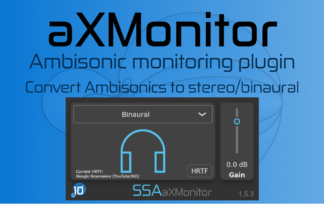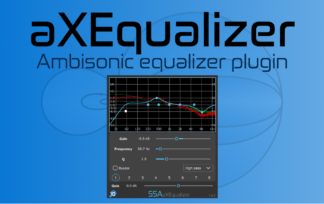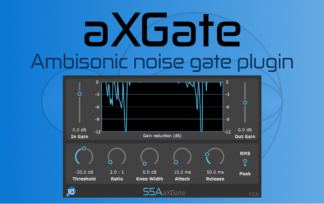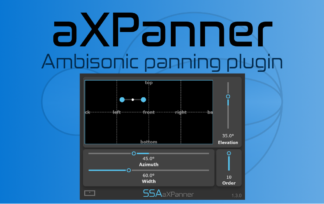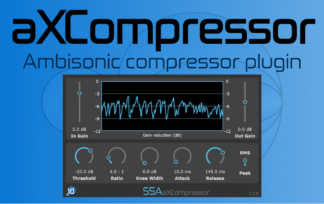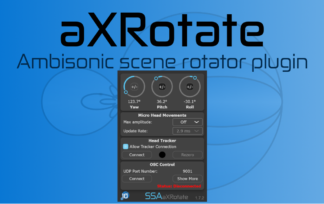In my last post I detailed two methods of converting Ambisonics to stereo. Equations and graphs are all very good, but there’s nothing better than being able to listen and compare for yourself when it comes to spatial audio.
With that in mind, I’ve made a video comparing different first-order Ambisonics to stereo decoding methods. I used some (work-in-progress) VST plugins I’m working on for the encoding and decoding. I recommend watching the video with the highest quality setting to best hear the difference between the decoders.
There are 4 different decoders:
- Cardioid decoder (mid-side decoding)
- UHJ (IIR) – UHJ stereo decoding implemented with an infinite impulse response filter.
- UHJ (FIR) – UHJ stereo decoding using a finite impulse response filter.
- Binaural – Using the Google HRTF.
The cardioid decoder more quickly moves to, and sticks in, the left and right channels as the source moves, while this is more gradual with the UHJ decoder. To me, the UHJ decoding is much smoother than the cardioid, making it perhaps a bit easier to get a nice left-right distribution that uses all of the space, while cardioid leads to some bunching at the extremes.
The binaural has more externalisation but pretty significant colouration changes compared to UHJ and cardioid decoding, but also potentially allows some perception of height, which the others don’t.
The VSTs in the video are part of a set I’ve been working on that should be available some time in 2018. If you’re interested in getting updates about when they’re release, sign up here:
[mc4wp_form id=”96″]

